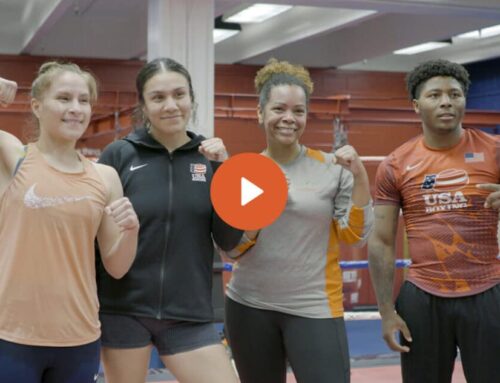![]()
The most effective coaches in the world motivate their players and create performance environments that allow their teams to thrive by addressing three simple human needs on a consistent basis:
- Control: They give their players opportunities for input and allow them to make decisions rather than being overly controlling and suffocating players with rules and limitations.
- Competence: They put their players in positions to be successful and utilize and develop their skills rather than killing motivation by exposing players’ weaknesses in competition.
- Connection: They make their players feel like they are a part of something bigger than themselves and are cared for rather than celebrating individuals at the expense of the group.
RELATED: Why The Golden State Warriors Spend Hours Floating in Salt Water
It is undeniable that the Golden State Warriors have changed the way the game of basketball is played forever. What’s perhaps been most remarkable about their success over the past couple of years is not the 2014-15 championship, their current back-to-back run to the NBA Finals, the 73-9 regular season or the many 3-point shooting records set along the way, but the underlying competitive drive and motivation that have made all this possible.
While the Warriors’ three All-Stars (Stephen Curry, Klay Thompson and Draymond Green) have received much of the credit, coach Steve Kerr and his staff deserve all the praise in the world for their ability to create a sustainable motivational climate within the team that few organizations come close to. Of course, the Warriors’ consistent success is obviously driven in large part by an extremely skilled and deep roster. However, breaking the Chicago Bulls’ record for wins in a season and coming back from a 3-1 deficit against the Thunder in the Western Conference Finals required tremendous motivation and perseverance through the emotional ups and downs of the journey.
RELATED: Steve Kerr Explains the Biggest Difference Between Steph Curry and Michael Jordan
I’m not sure whether Kerr is familiar with Deci and Ryan’s Self-Determination Theory, which inspired my 3C coaching approach, but he and his assistant coaches have created a performance environment that clearly follows the theory. Here are some examples:
Control

Kerr implemented an offensive system based on sound principles of ball and player movement and set plays to get shooters open. However, within that system, he allows his players to make decisions based on what they see, giving them a degree of control and freedom to use their creativity and intuition.
Competence

Players are put into positions that take advantage of their specific skills, and each player is plugged into the rotation for a specific reason. Though Kerr obviously runs a variety of plays to get Curry and Thompson open at the 3-point line, he also ensures that the role players thrive. Shaun Livingston gets to use his height by posting up smaller guards. Andrew Bogut and Festus Ezeli get to take advantage of their height and athleticism, respectively, and dive to the rim to convert lob plays. The list goes on. Regardless of their minutes, the Warriors perform with confidence and purpose no matter the situation.
Connection

Lastly, despite the undeniable star power on the team, led by back-to-back MVP Curry, Kerr has created a sense of unity among the players. On the court, guys demonstrate a genuine excitement when their teammates succeed and celebrate one another. Off the court, team dinners are the norm rather than the exception, contrary to what is the case with most NBA teams.
Kerr’s leadership and motivational style is nothing magical in and of itself, but his purposeful and consistent philosophy-to-action approach has allowed the Warriors to create a sustainable motivational climate and a true culture of excellence.
If you are a coach who is looking to build such a culture within your team or organization, feel free to contact me directly at [email protected] for an initial FREE consultation.
RECOMMENDED FOR YOU
MOST POPULAR
![]()
The most effective coaches in the world motivate their players and create performance environments that allow their teams to thrive by addressing three simple human needs on a consistent basis:
- Control: They give their players opportunities for input and allow them to make decisions rather than being overly controlling and suffocating players with rules and limitations.
- Competence: They put their players in positions to be successful and utilize and develop their skills rather than killing motivation by exposing players’ weaknesses in competition.
- Connection: They make their players feel like they are a part of something bigger than themselves and are cared for rather than celebrating individuals at the expense of the group.
RELATED: Why The Golden State Warriors Spend Hours Floating in Salt Water
It is undeniable that the Golden State Warriors have changed the way the game of basketball is played forever. What’s perhaps been most remarkable about their success over the past couple of years is not the 2014-15 championship, their current back-to-back run to the NBA Finals, the 73-9 regular season or the many 3-point shooting records set along the way, but the underlying competitive drive and motivation that have made all this possible.
While the Warriors’ three All-Stars (Stephen Curry, Klay Thompson and Draymond Green) have received much of the credit, coach Steve Kerr and his staff deserve all the praise in the world for their ability to create a sustainable motivational climate within the team that few organizations come close to. Of course, the Warriors’ consistent success is obviously driven in large part by an extremely skilled and deep roster. However, breaking the Chicago Bulls’ record for wins in a season and coming back from a 3-1 deficit against the Thunder in the Western Conference Finals required tremendous motivation and perseverance through the emotional ups and downs of the journey.
RELATED: Steve Kerr Explains the Biggest Difference Between Steph Curry and Michael Jordan
I’m not sure whether Kerr is familiar with Deci and Ryan’s Self-Determination Theory, which inspired my 3C coaching approach, but he and his assistant coaches have created a performance environment that clearly follows the theory. Here are some examples:
Control

Kerr implemented an offensive system based on sound principles of ball and player movement and set plays to get shooters open. However, within that system, he allows his players to make decisions based on what they see, giving them a degree of control and freedom to use their creativity and intuition.
Competence

Players are put into positions that take advantage of their specific skills, and each player is plugged into the rotation for a specific reason. Though Kerr obviously runs a variety of plays to get Curry and Thompson open at the 3-point line, he also ensures that the role players thrive. Shaun Livingston gets to use his height by posting up smaller guards. Andrew Bogut and Festus Ezeli get to take advantage of their height and athleticism, respectively, and dive to the rim to convert lob plays. The list goes on. Regardless of their minutes, the Warriors perform with confidence and purpose no matter the situation.
Connection

Lastly, despite the undeniable star power on the team, led by back-to-back MVP Curry, Kerr has created a sense of unity among the players. On the court, guys demonstrate a genuine excitement when their teammates succeed and celebrate one another. Off the court, team dinners are the norm rather than the exception, contrary to what is the case with most NBA teams.
Kerr’s leadership and motivational style is nothing magical in and of itself, but his purposeful and consistent philosophy-to-action approach has allowed the Warriors to create a sustainable motivational climate and a true culture of excellence.
If you are a coach who is looking to build such a culture within your team or organization, feel free to contact me directly at [email protected] for an initial FREE consultation.











